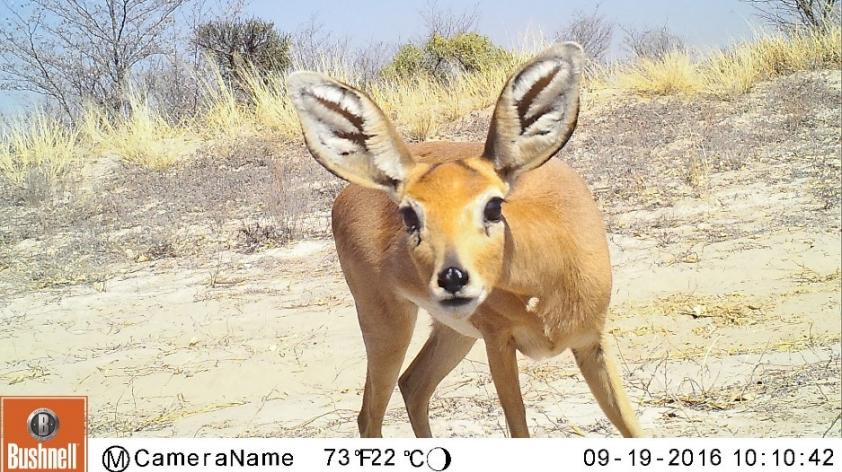
Biodiversity in non-protected areas – using cameras to assist conservation and mitigation
Botswana has an extensive protected area network, and these areas are rich in wildlife abundance and diversity. However, less is known about the wildlife diversity in non-protected areas. As any farmer in Botswana can tell you, there still exists a wide range of species that are co-existing across a range of agro-pastoralist areas. But how does this level of biodiversity compare with our protected areas and what implications does this have for wildlife conservation?
Cheetah Conservation Botswana (CCB) has been undertaking a range of surveys to assess the diversity of wildlife existing in a range of habitats using camera traps. Camera traps are a great tool for obtaining information on species inhabiting an area, as they are non-invasive and can collect data 24 h a day, allowing for observations of both diurnal and nocturnal species. Furthermore, they can be particularly useful for detecting rare and elusive species. Watch this short nighttime cheetah video:
Here's the same pair by day:
Recent work by the Research department has covered both commercial farming areas and wildlife management areas (WMAs) in the Ghanzi District. So far the cameras have revealed a wide range of species persisting in both land-use types, from small to large carnivores and a variety of ungulate species. Photographic detections of threatened species like cheetah, African wild dog and pangolin have been captured, as well as species considered not to be present like serval and African civet.
Both WMAs and commercial farms have shown a similar number and diversity of species. As the WMAs reside next to the commercial farms, this is not necessarily surprising as species, particularly smaller ones, can cross easily into farming areas. But for farms further away from the protected areas, high diversity may show that many species are able to survive and co-exist alongside people and livestock.
Gathering information about wildlife on farms can benefit farmers by providing knowledge on what species are present and what factors may influence the distribution of these species across the area.
For example, does the location of bore holes, fences, farm type or local habitat influence whether a species is found in a particular location? Understanding patterns of distribution can assist with both management of species as well as undertaking mitigation strategies, for example knowing where to target areas to reduce conflict.
We hope that by enhancing our knowledge about species distribution across a variety of land-use types, we cannot only be better informed about species presence in the district and country-wide, but also use the information to better conserve the wildlife of Botswana and maintain its biodiversity. Co-existence is a vital strategy needed in our farming areas, and here at CCB we are striving to find a variety of ways to undertake this.













